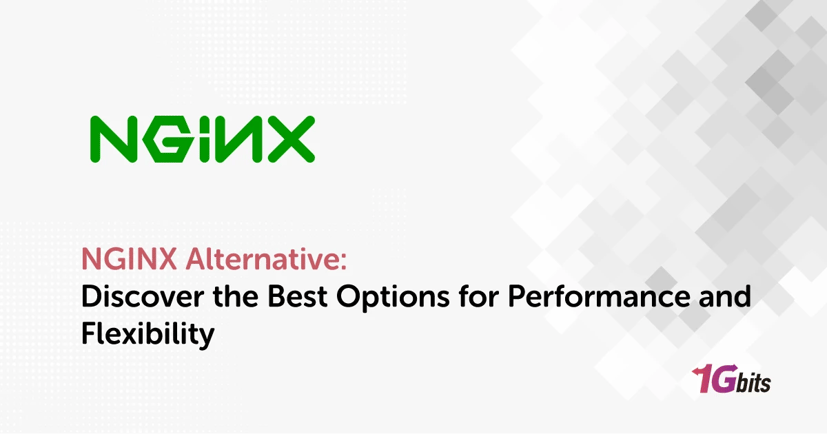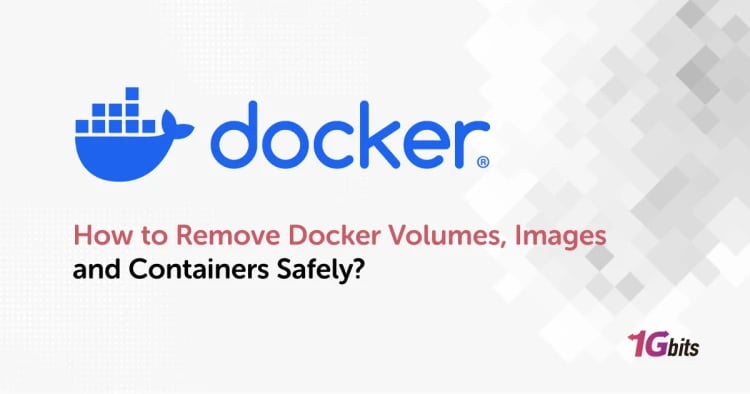When considering a robust web server, reverse proxy, or load balancer, NGINX is often the first name that comes to mind. However, several powerful NGINX alternatives are worth exploring, each offering unique features and benefits for various use cases. Whether you're looking for an NGINX alternative free option, a solution tailored to specific platforms like Windows, or an alternative to NGINX for cloud services like aws nginx alternative or azure nginx alternative , this guide will introduce some of the best NGINX alternatives available today. From Rust-based web servers as a Rust NGINX alternative to specialized options like Apache NGINX alternative and Cloudflare NGINX alternative, we'll cover them all. Additionally, we'll explore NGINX alternatives for Docker and api gateway nginx alternative, as well as NGINX alternative config options. Whether you're in search of an NGINX Amplify alternative or a load balancer NGINX alternative, this overview will help you find the best fit for your needs.
How to choose Nginx alternative?
NGINX is a powerful, high-performance web server and reverse proxy widely used for load balancing, caching, and serving static content. However, there are scenarios where an alternative might better suit specific needs. Whether you're looking for an NGINX alternative for Docker environments, a more specialized monitoring tool than NGINX Amplify, or a solution built with Rust for improved performance, this guide will help you make an informed decision.
1. Identify Your Requirements
Before selecting an NGINX alternative, it’s crucial to understand your specific needs. Ask yourself:
-
What are my performance requirements?
NGINX is known for its speed, but if you're handling a high volume of requests or require low-latency processing, you might want an alternative with better performance under certain conditions. -
What type of environment am I operating in?
Consider whether you're deploying on traditional servers, in a Dockerized environment, or within a cloud-native infrastructure. -
Do I need advanced features like load balancing, caching, or SSL termination?
NGINX excels in these areas, so any alternative should either match or exceed these capabilities. -
Is the ease of use or configuration simplicity important?
NGINX has a steep learning curve. If you're looking for something more straightforward, alternatives might offer easier setup and management.
2. Explore NGINX Alternatives for Docker
When working within a Docker environment, you might seek an NGINX alternative that's optimized for containerization or integrates seamlessly with Docker orchestration tools like Kubernetes.
Both Traefik and HAProxy have active GitHub repositories, offering a wealth of community-contributed plugins and configurations that you can leverage to enhance their functionality.
3. Consider NGINX Amplify Alternatives
NGINX Amplify Alternatives is a monitoring tool that provides insights into the performance and health of your NGINX instances. If you're looking for a more comprehensive or specialized monitoring solution, several alternatives might suit your needs:
4. Explore Nginx alternative Rust
For those prioritizing performance and safety, Rust-based alternatives to NGINX are worth considering. Rust’s memory safety features and performance advantages make it an attractive choice for developers seeking to avoid common pitfalls in C-based systems like NGINX.
5. Utilize GitHub for NGINX Alternatives
When exploring Nginx alternative github, GitHub is an invaluable resource. It’s not only a platform to find alternatives but also a place to discover community-driven enhancements and support.
-
Search for Repositories:
Look for popular repositories like Traefik, Caddy, or hyper to find alternatives. Analyze their issues, pull requests, and community activity to gauge their stability and community support. -
Contribute to Projects:
If you're comfortable with coding, contributing to these projects can be a way to tailor them to your needs. Whether it's adding a new feature or improving documentation, your contributions can benefit the broader community.
Choosing the right NGINX alternative depends on your specific needs, whether it's for nginx alternatives docker integration, monitoring, or leveraging modern languages like Rust. By evaluating your requirements, exploring GitHub resources, and considering specialized tools, you can find an alternative that fits your environment while offering the performance, features, and flexibility you need. Also, If you want to know definition of Neginx, read What is Nginx.
Top 10 Nginx alternative To Consider
1. Lighttpd
Lighttpd is a lightweight, high-performance web server designed to handle large numbers of concurrent connections while maintaining a low memory footprint. It's an excellent NGINX alternative, especially for environments where efficiency and resource management are critical.
Lightweight and Efficient
One of the standout features of Lighttpd is its lightweight architecture, making it a strong NGINX alternative for systems with limited resources. It is optimized for speed and minimal resource usage, ensuring that your server runs smoothly even under heavy loads.
Flexible Configuration
Lighttpd offers a flexible configuration system that allows users to fine-tune their server settings. This feature makes it an appealing NGINX alternative for those who require a customizable server environment without the complexity of NGINX’s configuration.
Secure and Reliable
Security is a top priority for Lighttpd. It supports features like SSL/TLS encryption and request filtering, making it a reliable NGINX alternative for security-conscious deployments.
FastCGI, SCGI, and HTTP/2 Support
Lighttpd supports FastCGI, SCGI, and HTTP/2, providing compatibility with modern web applications. These features make it a versatile NGINX alternative for various web technologies.
Active Development and Community Support
Lighttpd is actively developed and has a supportive community, making it a viable long-term NGINX alternative with continuous updates and improvements.
3. Caddy
Caddy is an open-source web server that has gained popularity as a powerful NGINX alternative. Known for its simplicity and ease of use, Caddy is particularly appealing to users who seek a straightforward configuration process without compromising on essential features. Below, we explore some key features that make Caddy a compelling NGINX alternative.
Automatic HTTPS
One of Caddy's standout features is its automatic HTTPS capability. Unlike many web servers, Caddy automatically generates and renews SSL certificates for your websites, making it an attractive NGINX alternative for those who prioritize security with minimal manual intervention.
Simple Configuration
Caddy's configuration is designed to be user-friendly, using a human-readable format that simplifies server setup. This makes it an ideal NGINX alternative for users who want to avoid the complexity of traditional web server configurations.
Cross-Platform Support
Caddy is compatible with various operating systems, including Windows, macOS, and Linux. This cross-platform support ensures that it serves as a versatile NGINX alternative, regardless of your development environment.
Built-In Web Applications
Caddy includes built-in support for several web applications and features such as reverse proxying, making it a comprehensive NGINX alternative for handling diverse web server tasks with ease.
4. AnalogX Proxy
AnalogX Proxy is a lightweight, free proxy server designed for Windows that offers basic functionality for managing network traffic. It's an excellent NGINX alternative for users seeking a simple and easy-to-use proxy solution. While not as feature-rich as NGINX, it provides essential proxy services that can suit various basic needs.
1. Basic Proxy Services
AnalogX Proxy functions as an NGINX alternative by offering fundamental proxy server capabilities. It handles HTTP and FTP requests, allowing users to manage and control network traffic effectively.
2. Easy Setup and Configuration
Compared to more complex NGINX alternatives, AnalogX Proxy boasts a straightforward setup process. Its user-friendly interface makes configuring proxy settings simple, even for those with limited technical experience.
3. Local Network Support
This NGINX alternative is particularly useful for local network environments. It can act as a proxy server for internal traffic, making it suitable for small-scale deployments where advanced features of NGINX are not required.
4. Performance Monitoring
AnalogX Proxy includes basic performance monitoring tools, providing users with insights into traffic patterns and server performance. While not as comprehensive as NGINX’s monitoring capabilities, it offers essential metrics for basic usage.
AnalogX Proxy is a valuable NGINX alternative for users needing a simple, easy-to-configure proxy server for Windows. It provides essential proxy services, local network support, and basic performance monitoring, making it an effective solution for environments where advanced features of NGINX are not necessary.
5. HAProxy
HAProxy is a high-performance, open-source software designed for load balancing and proxying for TCP and HTTP-based applications. It is renowned for its robustness and reliability, making it a strong contender as an NGINX alternative. This section explores the key features of HAProxy that contribute to its popularity.
Load Balancing
One of HAProxy’s standout features is its advanced load balancing capabilities. As an NGINX alternative, HAProxy efficiently distributes incoming traffic across multiple servers, ensuring optimal performance and resource utilization. Its support for various algorithms, including round-robin, least connections, and IP hash, allows for flexible load distribution tailored to specific needs.
High Availability
HAProxy excels in maintaining high availability, another reason why it serves as a solid NGINX alternative. It includes features such as health checks and automatic failover, which ensure that traffic is redirected away from malfunctioning servers to healthy ones, minimizing downtime and enhancing service reliability.
SSL Termination
For secure connections, HAProxy offers robust SSL termination features. As an NGINX alternative, HAProxy can offload SSL/TLS encryption from backend servers, thus improving performance and simplifying certificate management. This feature is particularly useful for handling secure communications efficiently.
Flexible Configuration
HAProxy’s configuration is highly customizable, allowing for fine-tuning according to specific requirements. As an NGINX alternative, its flexibility in handling complex traffic management scenarios makes it a versatile choice for diverse environments, from small applications to large-scale systems.
Overall, HAProxy’s features make it a powerful NGINX alternative, offering advanced load balancing, high availability, SSL termination, detailed analytics, and flexible configuration. Its capabilities ensure robust performance and reliability, making it a preferred choice for many organizations seeking alternatives to NGINX.
6. Varnish
Varnish is a powerful HTTP accelerator designed to cache web content and improve site performance. As an alternative to NGINX, Varnish excels in handling high traffic loads and can significantly speed up web applications by reducing server load and response times. It operates as a reverse proxy and caching solution, making it a strong NGINX alternative in various scenarios.
Caching Capabilities
One of Varnish's standout features is its advanced caching capabilities. Unlike traditional NGINX setups, Varnish provides highly configurable caching rules, allowing fine-tuned control over what content is stored and served. This NGINX alternative can store responses from web servers and deliver them quickly to users, minimizing the need to generate content dynamically on every request.
Configuration Flexibility
Varnish offers a powerful configuration language called VCL (Varnish Configuration Language). This feature provides more flexibility compared to NGINX configurations, allowing users to write custom rules and logic. As an NGINX alternative, Varnish's configuration capabilities enable complex caching strategies and traffic management, making it suitable for advanced use cases.
Performance Optimization
When it comes to performance, Varnish is known for its high-speed caching and delivery of content. It outperforms many traditional NGINX setups by efficiently managing cache and serving content directly from memory. For those seeking an NGINX alternative focused on optimizing response times and handling large volumes of traffic, Varnish is an excellent choice.
Advanced Analytics
Varnish provides detailed analytics and monitoring tools, which are essential for understanding traffic patterns and cache performance. This feature is particularly valuable as an NGINX alternative for users who need comprehensive insights into their web traffic and cache efficiency, helping them make data-driven decisions to enhance performance.
Security Features
Security is a critical aspect of any web server, and Varnish includes several features to protect against common threats. It offers options for securing cached content and controlling access, making it a robust NGINX alternative for users concerned about protecting their web applications from vulnerabilities and attacks.
7. Microsoft IIS
Microsoft Internet Information Services (IIS) is a flexible, secure, and manageable web server platform designed for Windows Server. As an NGINX alternative, IIS provides a robust suite of features tailored to enterprise environments, offering strong integration with Microsoft technologies and a variety of management tools.
Integration with Microsoft Ecosystem
One of the standout features of IIS as an NGINX alternative is its seamless integration with the Microsoft ecosystem. It works well with .NET applications and other Microsoft technologies, providing native support for ASP.NET, Windows Authentication, and other enterprise features. This makes IIS an appealing choice for organizations already invested in Microsoft products.
Advanced Security Features
IIS offers comprehensive security features, making it a solid NGINX alternative for securing web applications. It includes built-in support for SSL/TLS, request filtering, and URL authorization. The centralized security management provided by IIS ensures robust protection against common web vulnerabilities.
Comprehensive Management Tools
For those seeking an NGINX alternative with powerful management capabilities, IIS excels with its graphical user interface and command-line tools. The IIS Manager provides a user-friendly interface for configuring sites, applications, and security settings. Additionally, IIS supports automated management via PowerShell, offering advanced scripting capabilities for administrators.
Performance Optimization
IIS includes several performance optimization features, such as dynamic caching and request handling enhancements. These features ensure that IIS can efficiently handle high traffic loads, making it a viable NGINX alternative for performance-critical applications. IIS also integrates with Windows Server’s built-in load balancing and clustering technologies, enhancing its scalability.
Extensibility and Customization
As an NGINX alternative, IIS supports a wide range of extensions and modules, allowing for extensive customization. Through its modular architecture, users can add functionalities like URL rewriting, logging, and custom authentication mechanisms, making IIS adaptable to various application needs.
8. Traefik
Traefik is a modern, open-source reverse proxy and load balancer designed to manage microservices and dynamic infrastructure with ease. It simplifies the deployment and management of applications by automatically configuring itself based on the environment, making it a popular choice for users seeking an efficient and flexible alternative to NGINX.
Dynamic Configuration
One of Traefik’s standout features is its dynamic configuration capability. Unlike traditional reverse proxies, Traefik automatically discovers services and updates its configuration without requiring manual intervention. This is especially useful in environments with frequent changes, such as Docker and Kubernetes, where services can be added or removed dynamically.
Built-in Let's Encrypt Support
Traefik includes built-in support for Let’s Encrypt, allowing it to automatically obtain and renew SSL/TLS certificates for your services. This feature simplifies securing your applications with HTTPS and ensures that your certificates are always up to date, reducing the administrative overhead associated with managing certificates manually.
Integrated Metrics and Dashboard
Traefik provides integrated metrics and a user-friendly dashboard for monitoring and managing your services. The dashboard offers real-time insights into traffic, performance, and configuration, helping you quickly identify and address any issues. Metrics can be integrated with various monitoring systems to provide detailed performance data and analytics.
Advanced Routing Capabilities
Traefik offers advanced routing capabilities, including support for path-based and host-based routing, as well as load balancing algorithms. This flexibility allows you to define sophisticated routing rules that direct traffic to the appropriate services based on specific criteria, improving traffic management and service reliability.
Cost-Effectiveness
1Gbits offers a cost-effective solution for those looking for an NGINX alternative. Its pricing model can be more attractive for small to medium-sized businesses or projects with budget constraints, providing essential features without the high costs associated with more established solutions.
Community and Support
While newer than NGINX, 1Gbits is supported by an active community and offers comprehensive documentation to assist users in deploying and managing the software. This support infrastructure is crucial for troubleshooting and optimizing the solution, ensuring that users have access to resources and assistance when needed.
Choosing 1Gbits as an alternative to NGINX can be advantageous for its performance, ease of use, modern features, and cost-effectiveness. It provides a contemporary solution that aligns with current technological trends, offering a viable option for users seeking an alternative to traditional reverse proxies and web servers.
9. Apache HTTP Server
The Apache HTTP Server, commonly known as Apache, is an open-source and free web server software that is widely used across the internet to serve web content. Launched in 1995 by the Apache Software Foundation, it quickly became one of the most popular web servers due to its robust features, flexibility, and strong community support. Apache allows websites to be accessed via HTTP and HTTPS protocols, handling requests and delivering web pages to users’ browsers.
Features of Apache HTTP Server
-
Cross-Platform Compatibility:
Apache runs on various operating systems, including Unix, Linux, macOS, and Windows, making it highly versatile. -
Modular Architecture:
Apache's functionality can be extended through modules. These modules can be added or removed to include features like URL redirection, authentication, and SSL encryption, allowing for customized configurations. -
Virtual Hosting:
Apache supports virtual hosting, enabling one server to host multiple websites. Each site can have its own domain name and configuration, making it ideal for hosting multiple websites on a single server. -
URL Rewriting:
The mod_rewrite module allows for complex URL manipulation, such as redirecting URLs or enforcing specific patterns. This feature is useful for SEO and maintaining clean URLs. -
Security Features:
Apache offers strong security features, including SSL/TLS encryption for HTTPS, access control mechanisms, and the ability to configure custom security policies through modules like mod_security. -
Highly Configurable:
Apache allows extensive customization through its configuration files. Administrators can fine-tune nearly every aspect of the server, from performance optimization to security settings. -
Load Balancing and Failover:
Apache supports load balancing and failover, distributing incoming traffic across multiple servers to ensure high availability and improved performance. -
Support for Scripting Languages:
Apache integrates seamlessly with scripting languages like PHP, Python, and Perl, making it suitable for dynamic web applications.
Apache HTTP Server remains a cornerstone of web infrastructure due to its reliability, extensive feature set, and adaptability, making it a preferred choice for many web administrators and developers.
Jetty
Jetty is a versatile, open-source web server and servlet container developed under the Eclipse Foundation. It is widely known for its light footprint, modularity, and flexibility, making it an ideal choice for a range of applications, from small, embedded devices to large-scale enterprise systems. Jetty supports HTTP, HTTP/2, WebSocket, and other network protocols, making it suitable for various use cases, including web servers, application servers, and even as an embeddable component in other Java applications.
Lightweight and Modular Architecture:
Jetty is known for its lightweight design, with a core that is just a few megabytes in size. This makes it an excellent choice for applications where resources are limited, such as embedded systems or microservices architectures. Its modular architecture allows developers to load only the required components, further optimizing resource usage. Jetty's modularity is not just about reducing its footprint; it also makes it highly customizable, allowing developers to tailor the server to their specific needs without unnecessary overhead.
Embeddability:
One of Jetty's standout features is its ability to be embedded directly into Java applications. This means developers can integrate Jetty as a component within their software, enabling web server capabilities without the need for a separate server process. This embeddability makes Jetty an attractive option for applications that require tight integration between the web server and application logic, such as IoT devices, specialized enterprise applications, or microservices. By embedding Jetty, developers gain full control over the server's lifecycle, configuration, and behavior, leading to more cohesive and efficient applications.
Support for Modern Web Protocols:
Jetty is continuously updated to support modern web protocols, including HTTP/2 and WebSocket. HTTP/2 support improves performance by allowing multiple streams of data to be sent simultaneously over a single connection, reducing latency and improving user experience. WebSocket support enables full-duplex communication channels over a single TCP connection, which is essential for real-time web applications like chat applications, live updates, or online gaming. These features make Jetty a future-proof solution for web applications that need to handle modern web traffic efficiently.
Scalability
Jetty is designed to scale effortlessly from small, lightweight applications to large, high-traffic websites. Its asynchronous architecture and non-blocking IO capabilities enable it to handle a large number of simultaneous connections with minimal resource consumption. This scalability makes Jetty suitable for a wide range of deployment scenarios, from small-scale internal applications to large public-facing services. Additionally, Jetty's integration with cloud environments and its ability to handle dynamic content generation and resource caching further enhance its scalability.
Extensive Configuration Options:
Jetty offers extensive configuration options that allow developers to fine-tune every aspect of the server's behavior. Configuration can be done through XML files, the Jetty API, or using modern tools like Spring Boot, which simplifies Jetty's integration into enterprise applications. The ability to configure Jetty at such a granular level ensures that it can meet the specific requirements of different applications, whether they need high performance, security, or specific network configurations.
Security Features
Security is a critical aspect of any web server, and Jetty provides robust security features to protect applications. It supports SSL/TLS for secure communication, integrates with JAAS (Java Authentication and Authorization Service) for authentication, and provides various mechanisms for access control and session management. Jetty also offers tools for mitigating common web vulnerabilities, such as cross-site scripting (XSS) and cross-site request forgery (CSRF). Its security framework is highly customizable, allowing developers to implement and enforce security policies that align with their application's requirements.
Active Community and Ecosystem:
Jetty is supported by a vibrant community and a rich ecosystem of plugins and extensions. The Eclipse Foundation, which oversees Jetty's development, ensures regular updates and long-term support, making it a reliable choice for both new and existing projects. The availability of extensive documentation, tutorials, and third-party libraries further enhances Jetty's appeal, enabling developers to quickly get started and leverage the server's full capabilities.
Jetty stands out as a highly flexible, lightweight, and embeddable web server with a range of features tailored to modern web applications. Its support for modern web protocols, scalability, and extensive configuration options make it suitable for diverse use cases, from small embedded systems to large enterprise applications. The active community and continuous development ensure that Jetty remains a relevant and reliable choice for developers looking for a robust and adaptable web server solution.
Conclusion
Choosing the right NGINX alternative involves assessing your specific needs, whether it's for improved performance, easier management, or better integration with your existing systems. Alternatives like Traefik, with its dynamic configuration and built-in Let's Encrypt support, cater to modern, dynamic environments, making it ideal for containerized setups. Free options like Caddy offer simplicity and automatic HTTPS, while IIS serves as a robust NGINX alternative for Windows users. For those interested in Rust-based solutions, Actix provides high performance with a contemporary design. Each alternative brings unique features to the table, so evaluating your requirements and exploring these options will help you find the best fit. By considering factors like ease of use, performance, and cost, you can select an NGINX alternative that aligns with your operational needs and technical preferences.









